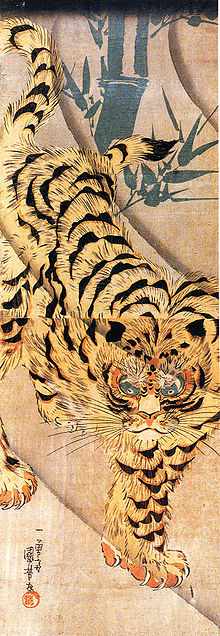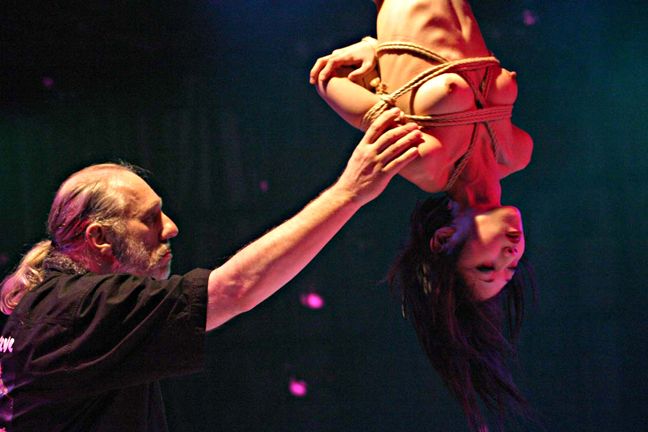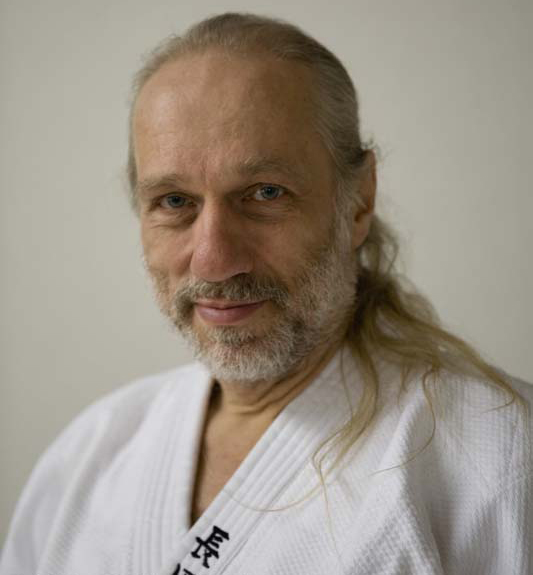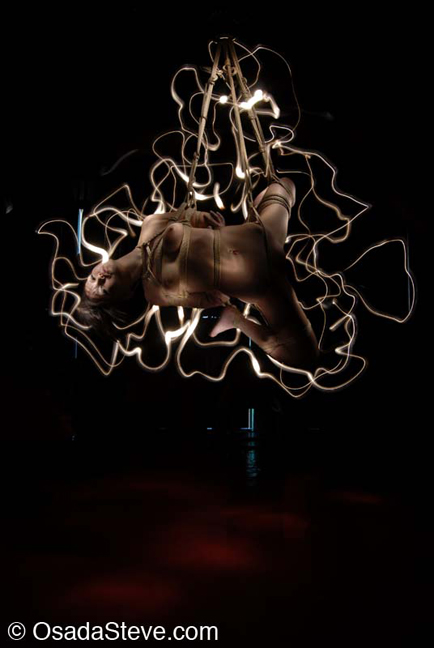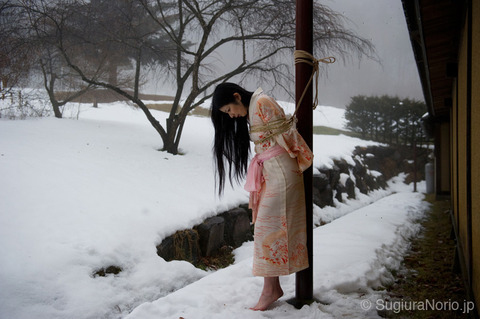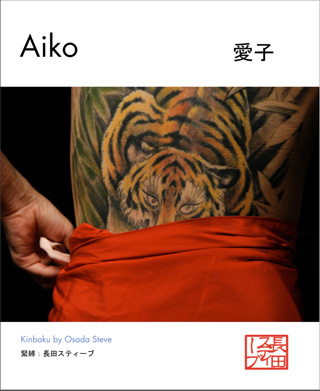The Beauty of Kinbaku
Or everything you always wanted to know about Japanese erotic bondage when you suddenly realized that you didn't speak Japanese
Meetings With Remarkable Men
Please note: no part of these articles may be reproduced by any means without the express written consent of the author or the publisher, King Cat Ink.
A Trip to Japan - Meetings with Remarkable Men # 6 -
Osada Steve
by Master "K"
At last, my trip to Tokyo is coming to an end. It has exceeded my expectations beyond my wildest dreams and my visits with some of the great bakushi of Japan will be the most precious of souvenirs. However, there's still one more important stop to make. Saving one of the best for last, it's time to report on my time with the one and only Osada Steve.
Although well known to most readers of these postings, Osada Steve might not be
familiar to everyone so let me begin by saying that my old friend is unique among bakushi (rope artists) living and working in Japan in that he is a Western European by birth. After establishing a successful business in Tokyo, he became fascinated with the art of kinbaku and against all odds found a way to learn its secrets.
He first became a student of the great Osada Eikichi (from whom he received his artist's name) and also has had instruction from the legendary Akechi Denki sensei, Yukimura Haruki sensei and the talented younger bakushi Kanna (for those interested, the first three of these legendary rope masters have full biographies in "The Beauty of Kinbaku"). In short, he has learned his skills from some of the very best. Over the years Steve has performed hundreds and hundreds of kinbaku/SM shows both solo and with his beautiful partner Ageha, among others, done videos and magazine/book layouts (most recently with the "dean" of Japanese shibari photographers Sugiura Norio) and opened kinbaku schools for Westerners both in Europe and Japan. In short, he is one of the most, if not THE most, talented, experienced and knowledgeable Western experts on kinbaku alive today.
He is also a most loyal and kind friend so when I was planning my trip I naturally contacted him and, typical of his generosity, this resulted in an invitation to join him and our mutual friend Nuit de Tokyo in their regular session with the master Yukimura Haruki (for those interested I chronicled this wonderful experience in part 3a of these posts). However, prior to this class I sat down in the beautiful Orchid Bar of the stately Hotel Okura with Steve and Ageha to discuss their careers.
To me Ageha seems an advertisement for young, hip and eclectic Tokyo. Curious about America, outgoing, gracious and beautifully dressed, she is also a perfect miniature. By this I mean she is one of the most diminutive women I've met (she is literally half Steve's size and on stage makes him look like a giant!) but every feature is in perfect proportion. Her stage name "Ageha" means butterfly in Japanese but she must be an iron butterfly as she is one of the strongest aerial performers I've ever seen. Of course, tough, tiny, acrobatic partners have long been the key to successful Kinbaku/SM stage shows and Steve is quick to point out the "star" position she once held in their attractive act. These days Ageha mostly performs solo in a "self suspension" program as Steve no longer enjoys the grind of club appearances.
This becoming modesty is very fitting for a man so steeped in Japanese culture where Western style displays of ego are considered adolescent, at the very least, if not downright crass. By any objective standard Steve's skills are remarkable and all the more notable because they encompass a variety of kinbaku disciplines: newaza, stage shows, teaching, kinbaku for photography, etc. In each of these forms of the kinbaku art, Steve’s classical, beautiful tying impresses. When I compliment him on these versatile achievements he smiles ... slightly.
Proof of this adaptability can be seen in the stills accompanying this article. I'm particularly impressed by the two images from the great photographer Sugiura Norio. One shows a perfectly executed and very old shibari pattern called a "water caltrop" (the design is said to be based on the 4 sided, sharp pointed device used by feudal armies to impede mounted warriors) and the other a moody anddeceptively simple tie created for a "snow session" where Steve and Sugiura sought to recreate one of the legendary "father" of modern kinbaku Itoh Seiyu's famous, if chilly, early 20th century photographic adventures (for a complete glossary of kinbaku terms and a lengthy biography of Itoh Seiyu please see "The Beauty of Kinbaku").
As the bar fills with evening revellers, Steve also expresses justifiable pride in the financial success of his kinbaku business activities in Japan: his 11 year Studio Six run, his beautiful kinbaku book "Aiko" and his European schools, despite the 11 to 12 hour trip (each way) he has to make every year to Berlin to oversee their activities.
As our evening together comes to an end, I think how much I respect Steve's enlightened point of view and appreciate his generosity of spirit and his kindness. In many ways he's the brother I always wished I had. A kinbaku brother? We bow very low to one another as we part. Thank you Steve.
A day later I'm back in LA. It seems my trip to the land of kinbaku is over in an instant! Was it a dream? I must return soon!
Please join me next time as I begin a new series of articles for this site on
"Kinbaku and Art"
with the first of two posts discussing
the best kinbaku photo books ever published!
As Ageha tucks into dinner with gusto, Steve talks somewhat critically about SM stage performances and admits he finds newaza kinbaku (the "caressing" style of binding pioneered by Yukimura Haruki) far more appealing personally. He speaks with self deprecating candor andquiet humor about the extravagant and sometimes odd gifts Ageha would receive from enthusiastic fans during their stage shows. Such prizes as money, blenders and even musk melons (an exotic treat in Japan, I'm told) would be tossed on stage to the tiny star at the conclusion of their act while Steve would quietly retire beyond the limelight's glow. It's not easy being "the man in black with the skilled hands."
I really get Steve's attention when I mention I've recently seen his famous 72 point Mt. Fuji pattern gote (the classic Japanese "box" tie with an ornate front) used to suspend a partner face down (utsubuse) in some Western pictures posted on the Internet by a novice rigger. Shocked, he nearly spills his wine as he indignantly exclaims, "In my classes I teach that pattern for the yoko zuri (sideways suspension)! It's less dangerous."
As I pour him another glass I offer my opinion that certain kinbaku ties and patterns should only be utilized for specific situations and then only on the right partner and how the concept of one tie fitting every partner is often mistaken. I find this to be particularly true in the West where rope subs are usually larger than the average Japanese model. Over coffee we agree that kinbaku education in the West is troubling and often lacking due to too many uninformed Internet photos andtoo many undereducated "teachers" eager to make a name for themselves.
Clearly Steve is passionate about proper kinbaku education and this topic takes up most of our second meeting. This came about post my session with Yukimura sensei and on a rainy summer night over a meal of (what else in Tokyo?) classic German weiner schnitzel and corn chowder!
In Japan, kinbaku is usually taught one on one from sensei (master/teacher) to a single student and Osada Steve is justifiably concerned with the way the art is taught (or not taught) here in the West. Regrettably, suspect videos on YouTube or large and not terribly informed classes at "rope conferences," where confused students can barely see the intricate techniques beingdemonstrated, often take the place of proper education and this can have a very deleterious effect both on the Western student's understanding of the art and on their learning proper safety techniques. This is especially true for suspensions.
